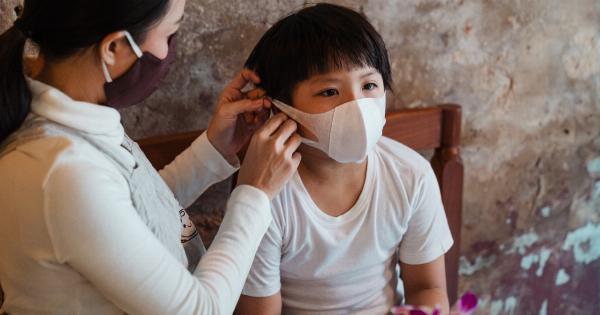Koxaki virus, also known as Coxsackievirus, is a common viral infection that affects both children and adults. It belongs to a group of viruses called enteroviruses, which primarily target the gastrointestinal system.
While Koxaki virus infections are usually mild, they can sometimes lead to more severe complications, especially in infants and expectant mothers. In this article, we will discuss important information that every parent and expectant mother should know about the Koxaki virus, including its symptoms, transmission, treatment, and prevention.
What is Koxaki Virus?
Koxaki virus is a member of the Enterovirus genus and is classified into two main serotypes, Koxaki A and Koxaki B.
These serotypes consist of numerous strains that can cause a variety of infections, ranging from common cold-like symptoms to more serious illnesses.
Symptoms of Koxaki Virus
The symptoms of Koxaki virus infections can vary depending on the strain and the individual’s immune response. In most cases, infected individuals may experience mild symptoms that resemble those of a common cold or flu. These symptoms may include:.
- Fever
- Sore throat
- Coughing
- Runny nose
- Sneezing
- Headache
- Muscle aches
- Fatigue
- Loss of appetite
In some instances, the Koxaki virus can cause more severe symptoms, such as:.
- Hand, foot, and mouth disease: This common manifestation of Koxaki virus infection is characterized by the development of painful sores or blisters in the mouth and on the hands and feet.
- Herpangina: This condition is characterized by the formation of small, painful ulcers in the back of the throat.
Transmission of Koxaki Virus
Koxaki virus is highly contagious and can be easily spread from person to person. The virus is primarily transmitted through:.
- Close contact with an infected person: Direct physical contact with an infected individual, such as through hugging or shaking hands, can facilitate the transfer of the virus.
- Respiratory droplets: When an infected person coughs or sneezes, they release respiratory droplets into the air, which can be inhaled by those in close proximity.
- Fecal-oral route: In some cases, the virus can be transmitted through contact with contaminated surfaces or objects, especially when proper hygiene practices are not followed.
Risks for Expectant Mothers
While Koxaki virus infections are generally mild for most individuals, expectant mothers may face additional risks. Infection during pregnancy can potentially lead to complications, such as:.
- Maternal discomfort: Expectant mothers infected with Koxaki virus may experience more severe symptoms, including persistent fever and fatigue.
- Increased risk of miscarriage: Some studies suggest a possible association between Koxaki virus infection during early pregnancy and an increased risk of miscarriage.
- Developmental abnormalities: In rare cases, Koxaki virus infection during pregnancy has been linked to developmental abnormalities in the fetus.
Treatment and Management
Currently, there is no specific antiviral treatment available for Koxaki virus infections. Most symptoms can be managed with supportive care, including:.
- Getting plenty of rest
- Drinking fluids to stay hydrated
- Taking over-the-counter pain relievers, such as acetaminophen or ibuprofen, to alleviate fever and discomfort
- Gargling with warm saltwater to ease sore throat
- Using topical creams or ointments to relieve hand, foot, and mouth disease symptoms
It is important to consult a healthcare professional for appropriate guidance, especially for infants, pregnant women, or individuals with weakened immune systems.
Prevention of Koxaki Virus
Prevention plays a crucial role in controlling the spread of Koxaki virus infections. Some preventive measures include:.
- Frequent handwashing: Proper and regular handwashing with soap and water for at least 20 seconds can help eliminate the virus from the hands.
- Avoiding close contact with infected individuals: Limiting contact with infected individuals, especially during outbreaks, can reduce the risk of transmission.
- Practicing respiratory hygiene: Covering the mouth and nose with a tissue or the elbow when coughing or sneezing can help prevent the spread of respiratory droplets.
- Sanitizing frequently-touched surfaces: Disinfecting commonly-touched surfaces, such as doorknobs, toys, and electronics, can help eliminate the virus.
- Ensuring proper food hygiene: Following good food hygiene practices, such as washing fruits and vegetables and avoiding consumption of undercooked food, can reduce the risk of fecal-oral transmission.
Conclusion
Koxaki virus is a contagious viral infection that can affect individuals of all ages, including expectant mothers and children.
While most Koxaki virus infections result in mild symptoms, it is important to be aware of the potential complications and risks, especially during pregnancy. By practicing proper hygiene, staying informed about preventive measures, and seeking appropriate medical care when needed, parents and expectant mothers can effectively protect themselves and their children from Koxaki virus infections.






























